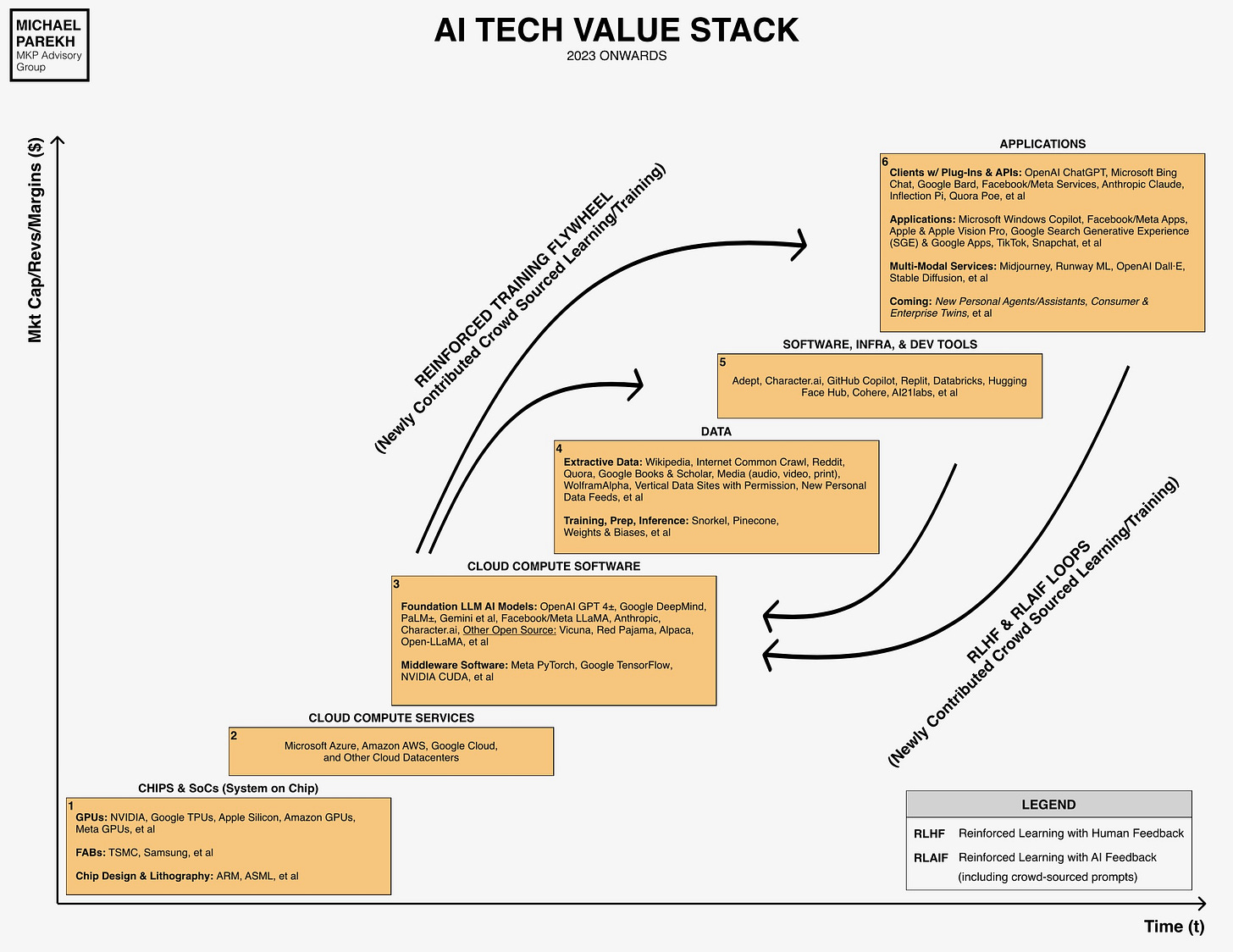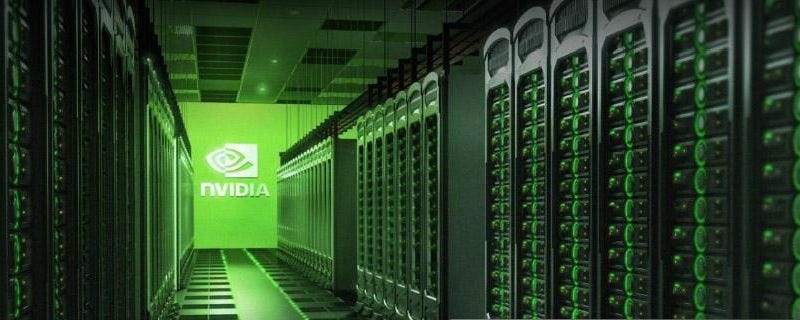We interrupt our normal OpenAI/Microsoft Silicon Valley Drama programming to highlight Nvidia’s just reported quarterly results. They beat expectations across their business segments, most increasingly AI driven. And continue to be the key secular AI infrastructure technology provider in the current AI Tech Wave gold rush. At least into 2025 at the earliest before any meaningful competition potentially provide AI infrastructure alternatives at Scale. Let’s unpack the financial and secular drivers.
As the Wall Street Journal puts it succinctly, “Nvidia’s Sales Surge, With No End in Sight for AI Boom”:
“Chip maker’s revenue and profit rise sharply as company signals more to come.”
“Nvidia reported another quarter of record sales and gave a strong revenue outlook, pointing tored-hot demand for chipsthat underpin the artificial-intelligence boom.”
“Huge investments in AI by tech giants from Microsoft to Amazon.com and by other large corporations have helped propel Nvidia’s sales to unprecedented levels in recent quarters.”
“In its latest period, its fiscal third quarter, sales more than tripled to $18.1 billion, well above Wall Street forecasts in a survey of analysts. Profits also surged, rising to $9.2 billion compared with $680 million a year earlier and above estimates.”
“Sales for the current quarter would be around $20 billion, Nvidia said, above expectations of about $18 billion.”
“Nvidia Chief Executive Jensen Huang said the strong growth reflected a transition into a new era of computing and a surge in generative AI—systems such as OpenAI’s ChatGPT that can generate convincing language and images with minimal prompting.”
Stock was flat in the after-market, but it’s already near all time highs up over 240% for the year:
“The latest results follow an unprecedented rise in sales. In May, Nvidia projected that it would make $11 billion in its fiscal second quarter, far above Wall Street expectations. Then, in August, the company said it made more than that—$13 billion—and projected another record quarter ahead. The company crossed a $1 trillion valuation in June, and was worth about $1.23 trillion at Tuesday’s market close.”
Analyst commentary and price targets tomorrow will likely see continued enthusiasm for long-term prospects of the shares.
One negative for the quarter and prospects going forward, are of course the prospects for the company’s sales in China. Especially given the ongoing US/China geopolitical discussions, a topic I’ve covered here, here, here and here. As the WSJ highlights:
“It hasn’t all been smooth sailing. Concern about AI’s utility in spying, cyberwarfare and advanced weaponry has led the U.S. to restrict exports of Nvidia’s most advanced chips to China. Nvidia executives have said they don’t see a significant near-term impact on sales, although Kress said in June that restrictions in the long run could lead to a “permanent loss of opportunities” for U.S. chip companies.”
“Nvidia has responded to successive rounds of U.S. export curbs by making lower-performance versions of its chips catering to the Chinese market.”
“In October, the U.S. barred Nvidia from selling China-specific chips it developed last year without first obtaining a license from the Commerce Department. That move put in jeopardy about $5 billion of Chinese orders for chips to be delivered next year.”
“Nvidia is now working on a new lineup of chips for the Chinese market that fall below new performance thresholds that would require U.S. government oversight. In addition, the company said it was working with some customers in China and the Middle East to get export licenses from the U.S.”
“China and other export-controlled countries have contributed between 20% and 25% of the company’s data center revenue in the last few quarters, the company said. They expected sales to those destinations to decline in the current quarter, “though we believe the decline will be more than offset by strong growth in other regions.”
“Regulators in China had inquired about Nvidia’s sales and efforts to supply the Chinese market, Nvidia said in a regulatory filing.”
Overall though, regardless of China’s responses, Nvidia should continue to be relatively supply constrained and see continued growth in all its core segments, including the high margin AI data center business over the coming quarters. It remains a key underpinning of how AI gets enabled for the next six to eight quarters. And Nvidia, led by founder/CEO Jensen Huang, remains a critical partner for other big tech companies ramping up their AI offerings ranging from Microsoft to Meta to Amazon, Google, and of course Apple.
Microsoft in particular remains a key partner regardless of how the OpenAI Black Swan event is resolved. For now, let’s note that Nvidia deservedly shifted our attention on AI multi-billion dollar investment momentum that has not been interrupted. Stay tuned.
(NOTE: The discussions here are for information purposes only, and not meant as investment advice at any time. Thanks for joining us here)







